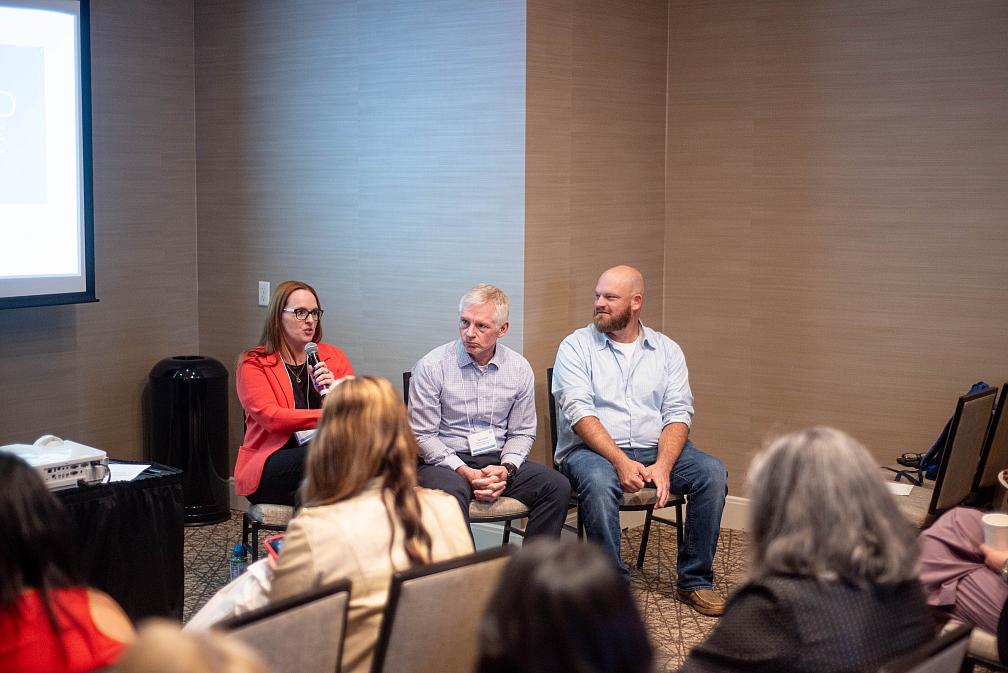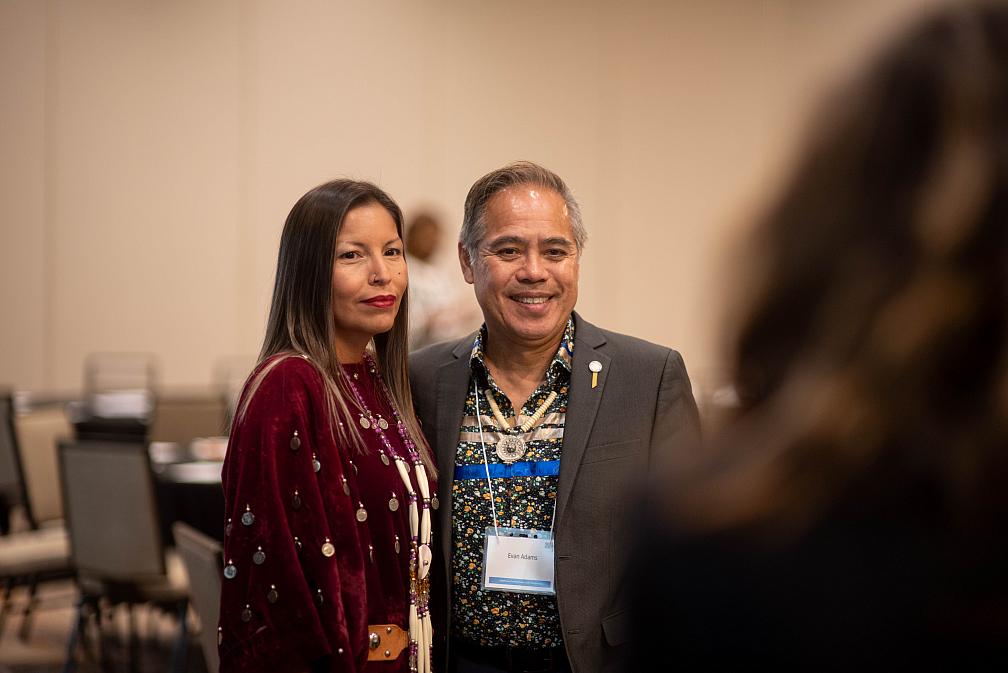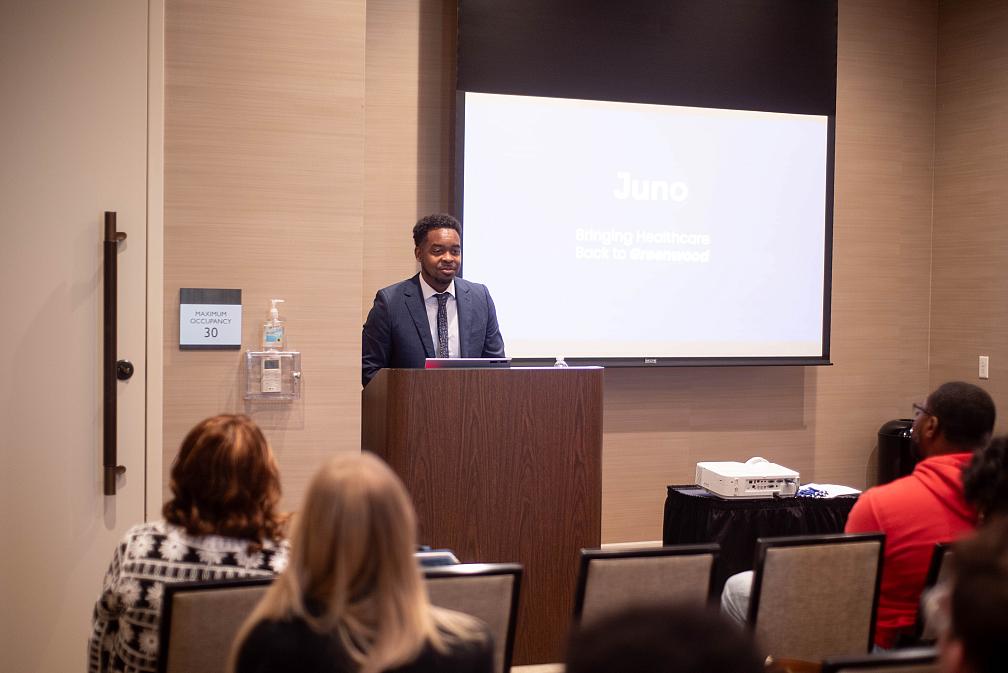

Health Equity in the Southern Great Plains: Stories from the 2023 Oklahoma Transformative Care Symposium
In some conservative states, the concept of equity has become a divisive topic. For example, in a letter addressed to Members of the Oklahoma State Board of Education earlier this year, Superintendent Ryan Walters referred to Diversity, Equity, and Inclusion as “harmful ideologies.” Yet, even within this challenging environment, it is possible to make progress on advancing equity in primary care and behavioral health services.
In October 2023, the Oklahoma Primary Care Association (OKPCA) and the Oklahoma Behavioral Health Association (OBHA), co-hosted the Oklahoma Transformative Care Symposium, convening healthcare providers and stakeholders from across the state to engage in discussions on health equity, health disparities, and social determinants of health. The conference included sessions on trauma-informed care, substance use disorders (SUD), Tribal health, women’s and LGBTQIA+ health, chronic disease, and mindfulness.
Two common themes emerged throughout the sessions: (1) the impact of funding, including the lack of flexibility or availability of state funding, and (2) the significance of partnerships and community. Furthermore, speakers demonstrated how deeply entwined funding and partnerships are. While it is necessary to have either adequate and sustainable funding sources or strong partnerships, speakers reiterated that the combination of both is what leads to desired outcomes. Below, we share three examples of how varying levels of reliable funding and partnerships play out on the ground in Oklahoma.
Strengthened Partnerships and Care Integration in the Face of Unreliable Funding
As a Licensed Clinical Social Worker and behavioral health consultant, Frannie Pryor dedicates much of her career to improving integrated care and care coordination at Community Health Centers, Inc. (an FQHC in Oklahoma). She described one of her first experiences with truly integrated care with a “willing [primary care] provider” who let her shadow patient visits. During one such visit, Pryor conducted a progressive muscle relaxation exercise, which lowered the patient’s systolic blood pressure by 20 points; being in the room with both the patient and provider was critical for demonstrating how to pair behavioral health with primary care interventions. This reminded her that the work “wasn’t just with the patients. It was also with the providers.” Now, as a consultant and behavioral health director at the South Central Medical & Resource Center, Pryor works in a health center with community health navigators and coordinators who help to align services for patients with behavioral health and primary care needs.
Despite Pryor's commitment to advancing care integration, external challenges emerged. In 2016, the Oklahoma Department of Mental Health and Substance Abuse Services (ODMHSAS) was awarded a $5 million SAMHSA grant to develop and implement Screening, Brief Intervention, and Referral to Treatment (SBIRT) services as a routine part of taking vital signs across a network of six smaller health centers in central Oklahoma. The funding was intended to enable the innovation and flexibility of care integration efforts. Unfortunately, leadership changes within ODMHSAS redirected funds. Consequently, the grant funds were no longer allocated for competitive provider salaries, hindering Pryor's efforts to promote care integration in Oklahoma.

The "Trauma-Informed Care" breakout session led by Frannie Pryor, Clark Grothe, and Mitch Sutter (from left to right).

“To improve health equity, it has to be the priority of the executives; it can’t just be a priority of the grassroots.” – Chris Harris, MD, Oklahoma’s only African-American fellowship-trained family medicine and obstetrics provider
Medical director support is integral to care integration efforts in Oklahoma. As Frannie explained, administrators do not often relinquish money typically spent on cutting-edge technologies and new equipment. While many health centers have sufficient funds, care integration is often left out of budget considerations due to its perceived lack of profitability. Given that medical directors and health centers themselves may be reluctant to allocate internal funds to care integration, external funding becomes the most feasible path toward care integration.
The Utilization of Time-Bound Federal Funding to Deepen Community Partnerships
The Office of Minority Health and Health Equity (OMHHE) at the Oklahoma State Department of Health (OSDH) was initially established in 1994, but a recent CDC grant that the office received in 2018 has greatly broadened its scope. This funding led to growth in both the OMHHE’s personnel and work; now, they administer grants to grassroots organizations working to address the social determinants of health, promote health equity, and increase access to healthcare for all. The office’s aim in advancing health equity is matched by its intention of bridging the State Health Department’s work to smaller-scale initiatives throughout Oklahoma.

Tamara Fragua and Dr. Evan Tlesla II Adams, Chief Medical Officer of the First Nations Health Authority
Tamara Fragua, a business coordinator for the OMHHE, shared that the unrestrictive nature of the grant allows them to fund a variety of programs that work to improve health equity (e.g. employment assistance, improving maternal and infant outcomes, and blood matching programs). The CDC grant fostered connections between OMHHE and a range of organizations that are each running health equity initiatives directly with communities across the state. As a result, the OMHHE has forged meaningful relationships with community members and grantee organizations.
“The ability to be a change agent is limited by the system.” – Chris Harris, MD
One limitation of the “system” is the ability to finance these programs. Despite the grant’s success in connecting with the communities served, these programs are only funded for a short period of time, and it is unlikely that OMHHE will receive State funding to sustain them. Nevertheless, this office and its work are a testament to the ways that health equity is embraced by different players within the State and how Oklahomans can engage with their health system.
The Right People – Centering Health Equity Through Robust Community Relationships and Private Funding
Juno Medical was created by and for the community to form a culturally relevant healthcare facility, both in terms of the employees and the Greenwood neighborhood. Every aspect of the Juno Medical story—where it is located, who works there, how it is funded—helps paint a larger picture of the power of private funding and the significance of community-building in promoting health equity across Oklahoma’s health clinics. Dr. Jabraan Pasha recounted the establishment of Juno Medical in Tulsa’s Greenwood neighborhood. Greenwood, a historic freedom colony and home to booming Black-owned businesses in the early 20th century until the 1921 Tulsa Race Massacre, lacked a clinic that reflected and catered to its community.
“There aren’t enough providers who are minorities and not enough clinics in minority areas.” – Chris Harris, MD
Pasha proudly shared that only one of the Greenwood clinic’s physicians is from outside of Tulsa; everyone else has lived or worked in the community prior. One of their initial challenges in attracting patients was that many residents did not think this new health center was for them. In an effort to embed themselves within the Greenwood community, Juno Medical’s opening event was a street party with food and games for local families and children.
Health equity can only be achieved when it's woven into the fabric of the organization, argued Dr. Pasha. “People First,” one of five values listed in Juno’s mission, is reflected in the structure of their organization: the same level of respect is extended to the front office worker, the board-certified internal medicine specialist, and the patient. Additionally, their entire staff receives health equity training to ensure that new and relevant concepts are applied to their practice.

Dr. Jabraan Adams, delivering his breakout session entitled, "Returning Care to Underserved Communities: Bringing Health Care Back to Greenwood."
While still very new, Juno has already made an imprint on the Greenwood community. “When you get the right people,” Dr. Pasha said, better health equity can be pursued. For Juno, “the right people” are passionate promoters of health equity and large funders. Juno Medical successfully attracted strong, external funding to support its organizational mission of health equity. Dr. Pasha reported that without these funds, Juno wouldn’t be the same health clinic it is today.
Toward a Better and Brighter Future
These powerful stories demonstrate that adequate and continuous funding, strong partnerships, and stakeholder support are all necessary to make progress toward health equity, particularly in Oklahoma. The existence of the conference itself was a clear example of the progress within the state and “a sign of success,” as Fragua pointed out, adding, “It’s Oklahoma! We know how much work needs to be done!” By convening committed, enthusiastic public health leaders to share their experiences, OKPCA and OBHA are empowering those in the State to advance health equity.